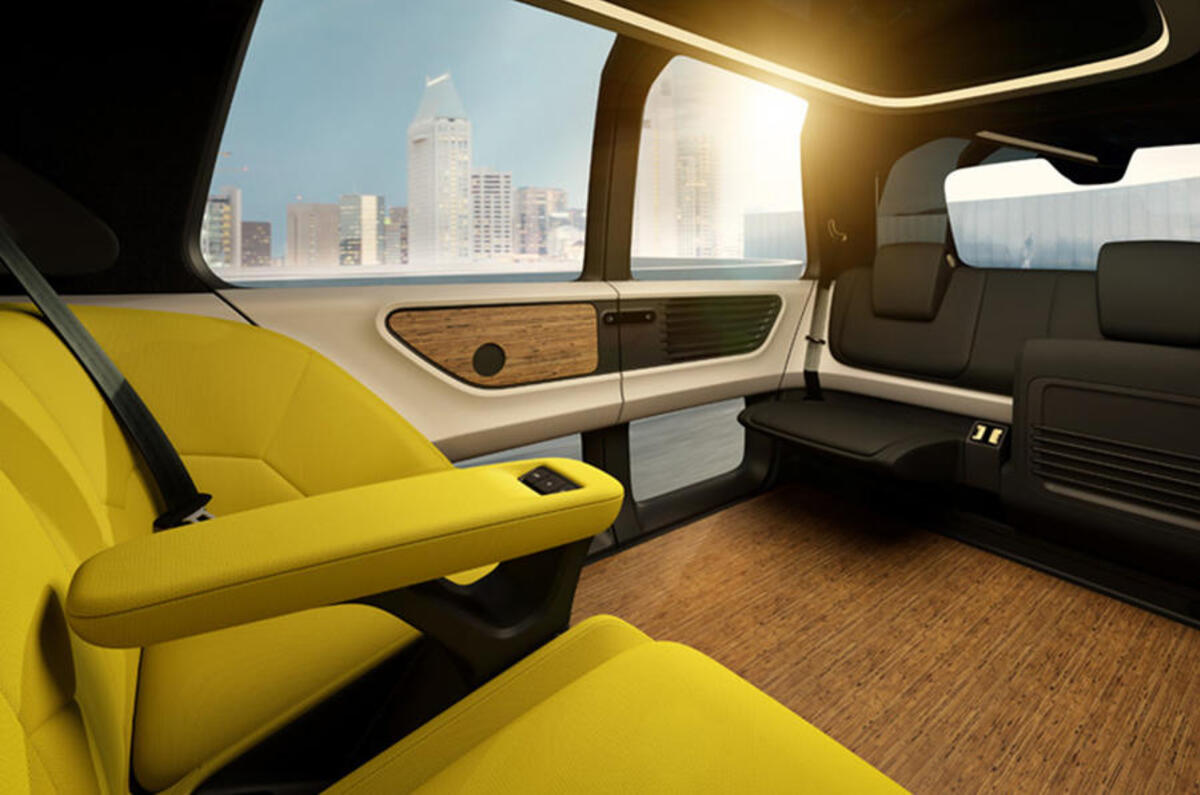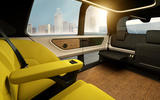With its box shape and winky-eyed face, it’s easy to be cynical about the VW Group’s Sedric concept, a vision of how the electrified, self-driving, fully connected car of the future will look. When car makers stare so far into the future, there’s a fine line to tread between being visionary and cliched, especially when you know that the car has been created in a relatively short space of time and - in part - in reaction to the Dieselgate scandal.
But don’t under-estimate Sedric - named after the words SElf-DRiving Car - because it is significant for many reasons, and it’s a neat trick by the powers that be to sit head of research and development Ulrich Eichorn in one of the four seats as he explains the concept. After 20 minutes sat in an individual chair, space to stretch out, it’s hard not to relax and start to appreciate the potential benefits of cars like this.
Sedric has a footprint not much bigger than a VW Volkswagen Up, but because there’s no engine and no controls beyond three buttons to command it to stop, go or call for assistance, there’s ample space for four plus luggage. The atmosphere is more designer front room than car, buoyed by the deliberately quirky materials; there’s no leather here, but vibrant lime green seats and a striking floor made of birch bark.
To set a course, you simply talk to the sat-nav which is displayed on a giant semi-translucent screen. That screen is significant, because it uses the latest technology to allow your eyes to either focus through or on it; as a result, it can either dominate the cabin or sit in your peripheral vision, depending on your focus, and it allows your mind to switch between concentrating on the journey or the company you are with.
The 360-degree camera that monitors the cabin - and you - is a little bit Big Brother, but soon forgotten. The point is that it is constantly monitoring the car from the inside, while the various Lidar sensors propel you on your way; being constantly monitored is increasingly a part of modern day life that we may have to get ever-more used to.
Climbing out, VW Group CEO Matthias Mueller’s description of Sedric as “making autonomy fun” still feels a little like it is grasping at straws; I can see the appeal of cars like Sedric on many levels, but as a car enthusiast, I can hardly embrace it as fun. But what is increasingly clear is why car makers are increasingly confident that cars like this will be on our roads within ten years. Not everywhere, perhaps, but first in controlled environments designed specifically for them, then urban areas, then perhaps further afield.









Join the debate
Add your comment
Well, it was referred to as a "bus."
I rode home from the mall in one of these just today